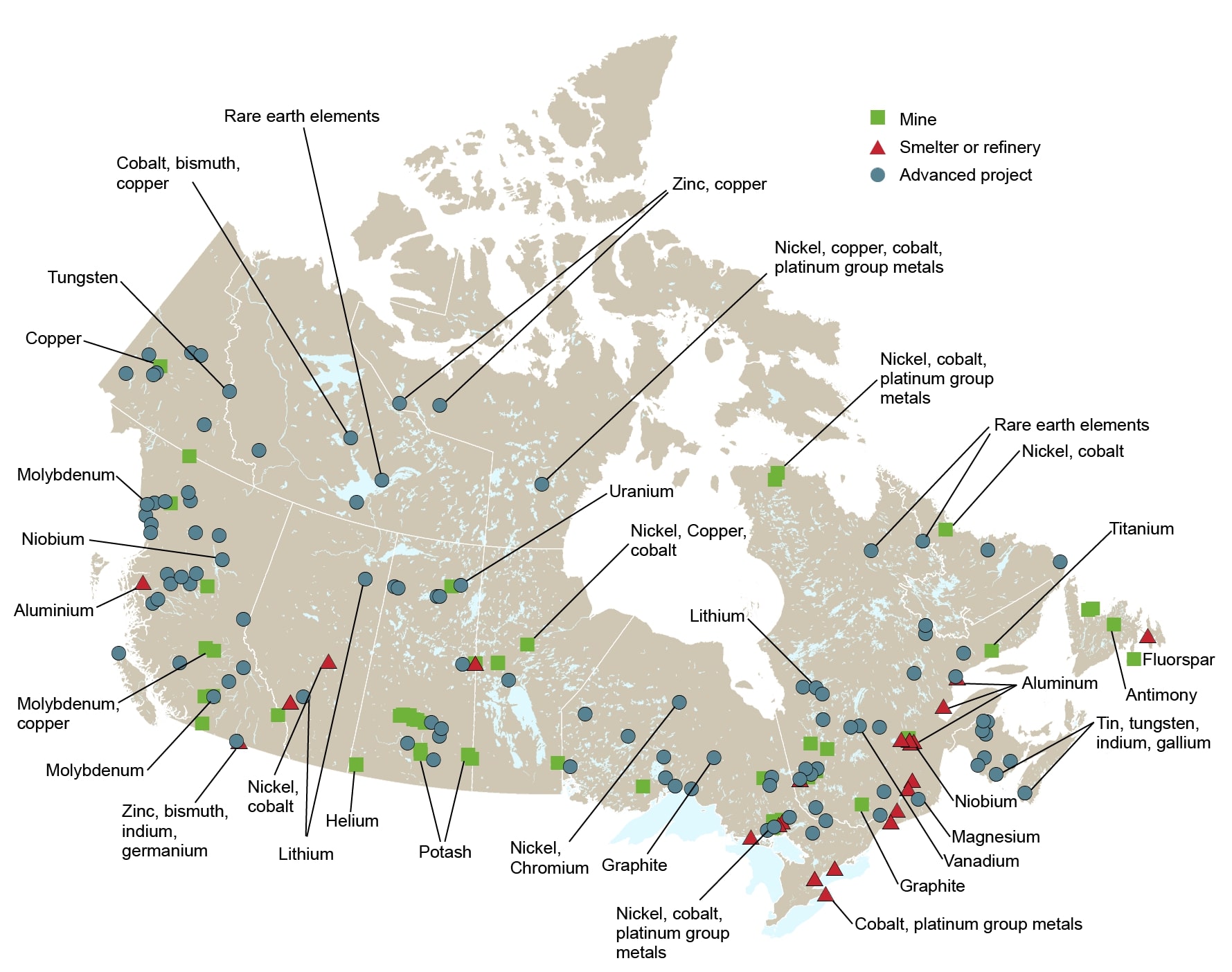A comprehensive industrial strategy is badly needed to help confront the multiple crises Canada – and all humankind – is up against: climate, biodiversity, water, pollution, inequality, migration, and more. Unfortunately, the new federal "critical minerals" strategy is not it. It's basically is an adaptation of business as usual, and if anything, promises to accelerate the literal bulldozing of Indigenous rights.
Canada's Critical Minerals Strategy places a welcome emphasis on value-added manufacturing, high standards for environmental and human rights protection, Indigenous rights, and circular economy. However, those principles are not backed with proposals for meaningful implementation, and they are rendered almost meaningless by the strategy’s central thrust – deepened and accelerated extraction of raw materials for global markets. There is no recognition of the material implications of the Paris commitments to address the climate crisis, much less of already-strained planetary limits, beyond laudable but merely conceptual mentions of recycling and circular economy.
This is basically Canada’s “business as usual” – extraction, processing, and shipping raw materials, with limited “branch plant” manufacturing, reconstituted with added emphasis on value-added processing. So on the one hand, the new strategy comprises a limited and inadequate industrial restructuring that would increase Canada’s industrial capacity and autonomy, but only to a limited extent and only using a limited set of policy tools; on the other hand, it fails to contemplate measures that would even remotely allow Canada to address the climate crisis in a meaningful way, and in fact promotes measures that will lead to a deepening of not just the climate crisis but also other planetary crises, biophysical as well as socio-political and economic, including inequality, democratic governance, migration, and human security.
The strategy relies on market-based mechanisms – subsidies and tax expenditures – to promote investment, plus taxpayer-funded infrastructure. There are other gifts to the mining industry as well, like a 30% Critical Mineral Exploration Tax Credit for targeted critical minerals, on top of the existing flow-through tax credits for exploration and other tax treatments. But there is no mention of more direct forms of government action, unlike the US, which, under the new Inflation Reduction Act, is investing directly in projects it considers promising and strategic, and even contemplating stockpiling.
Elements that would make this strategy more meaningful include
- an all-of-government approach to address shortcomings in environmental, social, and labour planning and protection
- rationalisation of subsidies and taxation to support desired activities/outcomes like recycling
- direct investment in production, processing, manufacturing, and recycling – as an owner or part owner, not a “partner” without meaningful management role/control
- regulatory requirements for recycling and recyclability as well as repairability
- market intervention to stabilise demand and prices – eg. stockpiling (note that while international trade agreements bar restrictions on exports, simply buying up production is not affected)
The commitment to "Accelerating Responsible Project Development" is deeply worrying, based as it is in a lack of understanding of the government's own processes and a clearly implied marginalisation of Indigenous rights. This is especially troubling in view of the recent approval of the Marathon Palladium mine despite acknowledged significant environmental impacts, "justified under the circumstances" based on untested projections/promises and heralded as "critical minerals" despite the fact that palladium is primarily used for catalysts for internal combustion engines – which we are supposed to be phasing out!
- Support for northern regulatory processes ($40 million) is important, but what about capacity-building for Indigenous communities and responsible authorities in the rest of the country, where many of the existing bottlenecks are? What about support for non-Indigenous communities to engage in land use planning and assessment processes so they can respond more effectively (and promptly) to project proposals?
- Support for Indigenous governments seems to be solely focused on "economic reconciliation", aside from a nod to Indigenous Guardians programs;
- The federal environmental assessment already excludes all but the largest mining projects, and provincial processes are weak (or in Ontario's case, are purely voluntary);
- There is no recognition of legal and regulatory shortcomings and gaps that contribute to both delays and poor outcomes;
- Zero recognition of the major source of delays – project proponents, either waiting for better market conditions and trying to find financing, or doing the necessary engineering and environmental work to make a project viable.
Mining-affected communities are asking for better regulation, not more deregulation. (Recent examples include Imperial Metals' effluent dumping into Quesnel Lake and mining claims overrunning other land uses in Quebec.
Image: Natural Resources Canada's map of "critical minerals" in Canada. Note the number of "advanced projects," many of which will never make it to production.
Postscript (December 11, 2022): Interestingly, while other federal agencies publish the submissions they receive as part of public consultation processes and produce detailed "what we heard" summaries, in the case of the Critical Minerals Strategy Discussion Paper that preceded the Strategy, there is only a cursory and selective summary. The actual submissions are not public.
